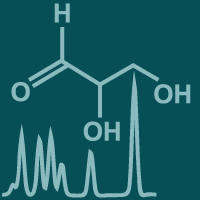Topic Editors


Multi-Omics in Precision Medicine
Topic Information
Dear Colleagues,
Precision medicine embraces the power to predict the most suitable treatment strategy for patients affected by complex diseases, thus improving medical and public health management. This ap-proach moves through the definition of multi-omics profiles in combination with patients’ clinical data with the final goal of determining disease susceptibility or discovering diagnostic, prognostic, and predictive biomarkers. Starting from single patients, it is possible to develop predictive models to identify early risk or identify therapeutic strategies and knowledge bases for predictive and per-sonalized healthcare in diverse populations. These aims can be easily fulfilled owing to the high fea-sibility of collecting omics data, including genomics, proteomics, and metabolomics. Furthermore, artificial intelligence and machine-learning algorithms improve precision medicine by leveraging and extending the value of original data. In fact, through integration procedures, pa-tient-specific multi-omics profiles can be modelled against public data repositories and annotation databases to obtain new insights or shape existing knowledge into disease mechanisms. This Topic will include emerging and significant advances in multi-omics strategies for implement-ing precision medicine, welcoming research papers, reviews, and communications based on exper-imental in addition to in silico characterization of multi-omics datasets and the management of big data.
Dr. Michele Costanzo
Dr. Armando Cevenini
Topic Editors
Keywords
- precision medicine
- multi-omics
- personalized therapy
- proteomics
- metabolomics
- machine learning
- artificial intelligence
Participating Journals
| Journal Name | Impact Factor | CiteScore | Launched Year | First Decision (median) | APC | |
|---|---|---|---|---|---|---|

Biomedicines
|
3.9 | 6.8 | 2013 | 17 Days | CHF 2600 | Submit |

Metabolites
|
3.7 | 6.9 | 2011 | 14.4 Days | CHF 2700 | Submit |

Proteomes
|
3.6 | 7.2 | 2013 | 28.2 Days | CHF 1800 | Submit |

Genes
|
2.8 | 5.5 | 2010 | 14.6 Days | CHF 2600 | Submit |

J
|
- | - | 2018 | 37.2 Days | CHF 1200 | Submit |

Preprints.org is a multidisciplinary platform offering a preprint service designed to facilitate the early sharing of your research. It supports and empowers your research journey from the very beginning.
MDPI Topics is collaborating with Preprints.org and has established a direct connection between MDPI journals and the platform. Authors are encouraged to take advantage of this opportunity by posting their preprints at Preprints.org prior to publication:
- Share your research immediately: disseminate your ideas prior to publication and establish priority for your work.
- Safeguard your intellectual contribution: Protect your ideas with a time-stamped preprint that serves as proof of your research timeline.
- Boost visibility and impact: Increase the reach and influence of your research by making it accessible to a global audience.
- Gain early feedback: Receive valuable input and insights from peers before submitting to a journal.
- Ensure broad indexing: Web of Science (Preprint Citation Index), Google Scholar, Crossref, SHARE, PrePubMed, Scilit and Europe PMC.

